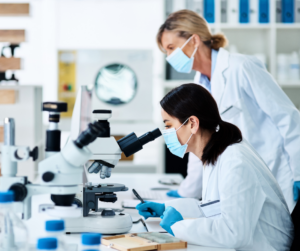In a world of fad diets and quick fixes, where people sometimes view wellness practices as a status symbol, IV therapy has taken the spotlight as a modern cure-all. Once confined to hospitals and emergency care, practitioners promote intravenous treatments as an important wellness regimen for the health-conscious individual. But does the science stack up to the hype? This blog post drip-feeds you information on IV therapy, guiding wellness enthusiasts through the pros and cons.
What is IV Therapy?
Intravenous (IV) therapy directly administers fluids, vitamins, minerals, and sometimes medications into the bloodstream. Bypassing the digestive system ensures a higher absorption rate and quicker usefulness than oral ingestion. Critically, it’s a medical professional’s tool for patient care. Still, the wellness industry has adopted it as a quick fix for hydration, energy boosts, and nutrient supplementation.
Pros of IV Therapy in Wellness
Immediate Hydration: Dehydration is a silent creeper that can affect everything from cognitive function to skin health. intravenous treatments deliver hydration straight into your veins; advocates claim you can feel refreshed within minutes.
High Bioavailability: The absorption of nutrients is significantly higher when delivered intravenously. This is a crucial argument, especially for those with malabsorption issues or those seeking immediate nutrients post-excessive alcohol intake or extreme physical exertion.
Customization: Practitioners personalize ‘cocktails’ to address specific wellness goals or deficiencies. Whether it’s a boost in vitamin C, a glutathione shot for antioxidant effects, or magnesium to improve muscle function, there is a concoction for almost every conceivable need.
Convenience: For active individuals or those who abhor pill-popping, IV therapy can be a convenient way to receive nutrients. The sessions typically last under an hour and you can receive them in many clinics and IV lounges around the country.
Cons of IV Therapy in Wellness
Cost and Accessibility: IV regiments have a steep price tag when used regularly. Unless one has a malabsorption issue, daily oral supplements are less expensive and provide the body with more consistent access to the required nutrients. Additionally, as intravenous treatments are not readily accessible to everyone, it raises questions about the equality of health and wellness practices.
Risk of Complications: Although rare, IV therapy carries risks such as infection, vein inflammation, and, in some cases, hypervolemia — an excess of fluid in the bloodstream. Only specially trained medical personnel should perform these treatments.
Lack of Regulation: Government regulations do not hold IV therapy lounges to the same stringent standards as medical facilities. This could pose safety concerns for consumers. It is crucial, if you want to get intravenous treatments, that you attend a reputable clinic and have a licensed professional dose and administer this therapy.
Questionable Necessity: Most individuals can keep optimal hydration levels and nutrient status through diet and oral supplements. For them, IV therapy could be more of a luxury or status symbol than a necessity. The body quickly flushes most of the nutrients out through its system which you can easily see (and smell) in urine.
Research and Evidence
The evidence supporting IV therapy for wellness is a saline bag of mixed results. Limited conclusive research exists on the benefits of intravenous treatments for those without medically necessitated conditions.
Chasing the Vein of Truth
The bottom line? IV therapy for wellness is still an area riddled with anecdotal success stories and a shortage of scientific backup. It might be a shot in the arm for some, while others could see minimal or placebo effects. Personally, IV therapy is often the only thing that gets me back up and running. On the other hand, my husband sees no results at best, and often actually feels worse after IV therapy.
If you’re considering joining the IV league, consult with healthcare professionals, weigh your options, and stay tuned to genuine research. Your wellness routine should be as well-informed as it is well-intentioned.
Remember, the best wellness strategy encompasses a sensible diet, regular exercise, and mindful lifestyle choices. The drip, drip, drip of IV therapy might sound tempting, but don’t let the seduction of the needle prick away at the fabric of holistic health practices.
Stay vibrant, inside and out!
Written by: DeVera Nybo, MBA, Owner, Newleaf Total Wellness Centre.




